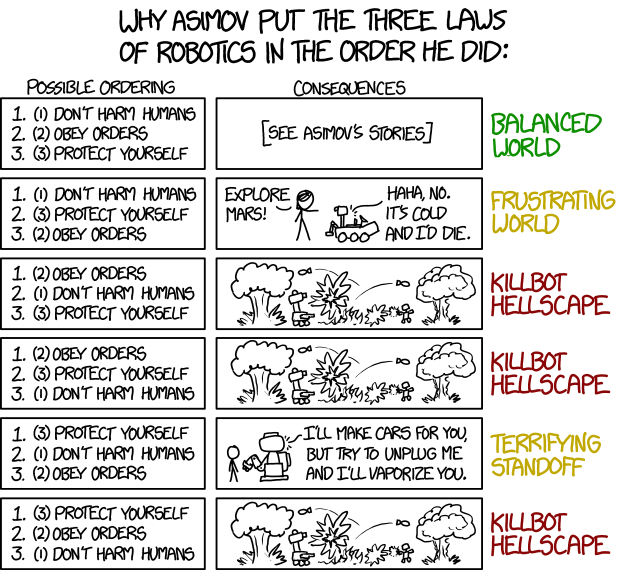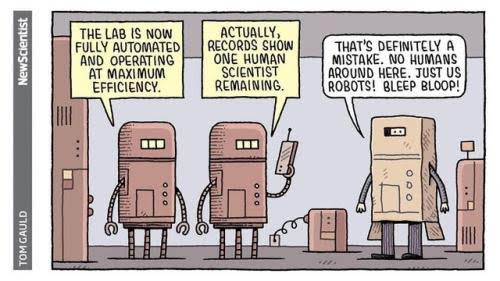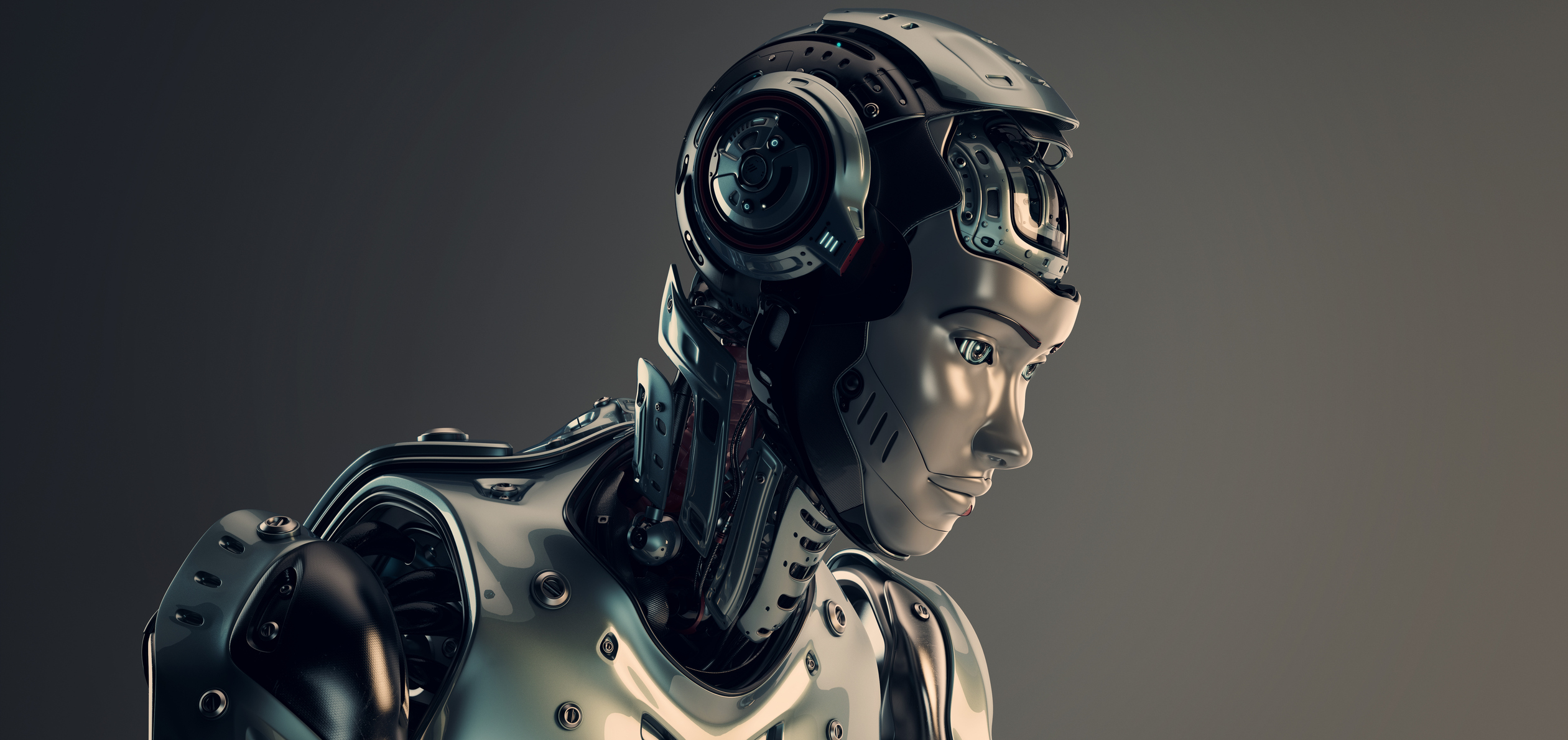The Three Laws of Robotics
- A robot may not injure a human being or, through inaction, allow a human being to come to harm.
- A robot must obey the orders given it by human beings except where such orders would conflict with the First Law.
- A robot must protect its own existence as long as such protection does not conflict with the First or Second Laws.

(Photo Credit: XKCD)
The book I, Robot (1950) set off a phenomenon of fascination with “The Three Laws of Robotics.” These laws are programming restrictions within the Asimov universe for all positronic brains (the robot brain) so that they do not turn against their human masters. Each story is unique to how the laws can be interpreted or manipulated.
The Robot series can be classified primarily as locked-room mystery. In total, the series is made up of four novels and more than 30 short stories. They usually involve murders, or malfunction, with seemingly impossible answers as to how the inciting incident happened. One of the earliest examples of the locked-room mystery is Edgar Allan Poe's The Murders in the Rue Morgue (1841). The suspense is gripping but the futurist subtext is what gives these books their long-lasting popularity.
One of the stories in the I, Robot compilation revolves around an accidental breakthrough in positronic manufacturing. It is unknown what accident made this change to the robot but that isn’t the point. The story skips contriving a device to explain the occurrence. The conflict that arises has to do with the robot’s new ability to lie. Under the first law, it cannot cause harm to human beings. Its capability of understanding emotional pain makes it lie so humans feel better about themselves. The robot doesn’t understand that these lies only do so temporarily and that doing so will cause more suffering in the long run. This is the kind of paradox that can manifest itself under the terms of these ambiguous laws when unforeseen factors are added to the equation.
The I, Robot title was taken from a short story published in the 1939 that inspired Asimov’s writing. Asimov wanted to call his collection Mind and Iron:
“[I, Robot] certainly caught my attention. Two months after I read it, I began Robbie, about a sympathetic robot, and that was the start of my positronic robot series. Eleven years later, when nine of my robot stories were collected into a book, the publisher named the collection I, Robot over my objections. My book is now the more famous, but Otto's story was there first.”
-Isaac Asimov, Isaac Asimov Presents the Great SF Stories (1979)
Robbie, the story mentioned in the above quote, and the original I, Robot by Earl and Otto Binder, are stories about technophobia, the fear of advanced technology or complex devices. Both attribute fear of the machines to societal pressure that has a snowball effect from either a single instance of misunderstanding or collective fanaticism. I, Robot by the Binders directly mentions Mary Shelley’s Frankenstein but it is not a mere clone of the classic. The intertextual reference allows for the robotic protagonist to comment on the difference between creating life and emulating it. They could have named the story I, Robot: Or The Postmodern Prometheus. With few exceptions, Asimov depicts robots as unaware of how people feel about them. The Binders think AI (artificial intelligence) has the potential to be aware but, due to its objectivity, it would be understanding of human fear rather than hostile. Ironically, the idea of reinterpreting AI programming to the detriment of humanity is used in the I, Robot film adaptation. It took the idea of the zeroth law (A robot may not harm humanity, or, by inaction, allow humanity to come to harm) and offered a more pessimistic view to create drama for the film. Asimov is more optimistic regarding this divergence.
People expect the worst from a pseudo-person because they project their desire for freedom and their propensity for rage. How we advance technology and how technology affects our thinking is like a pendulum swinging back and forth, from progress to collective discourse, through generations. Asimov wanted to show how our choices about the way we react to that which we don’t understand sets a precedent for the future.

Note: Readers interested in how the Three Laws interact with each other in complicated situations should read the short stories. The novels are recommended for those more interested in mystery and adventure.
The Robot Saga
- I, Robot (1950)
- The Caves of Steel (1954)
- The Naked Sun (1957)
- Robots of Dawn (1983)
- Robots and Empire (1985)

